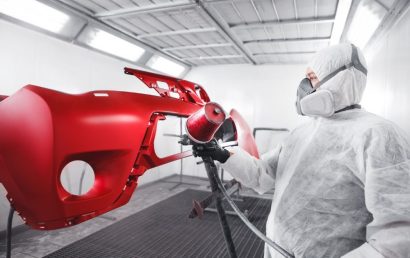How Big Is The Market For Electrical Insulation Coatings?
Without getting in depth as to global markets, value, dollar signs, and investment jargon, we’re going to try to examine the electrical insulation coatings market, it’s current condition, and its future. We will also briefly touch upon its current value.
But first, a closer look at electrical insulation coatings is in order. Let’s look at what these types of coatings entail and what they’re used for.
Electrical Insulation Coatings
All coatings are protective in nature. For high performance needs, however, some have special added properties. Electrically nonconductive coatings, in addition to those which are conductive, are good examples. (There are also solid and dry film lubrication, powder, anti-corrosion, traction release paper covering, food grade, non-stick coatings, and more.)
With a low dissipation factor, high surface resistivity, and high dielectric strength, fluoropolymer coatings are used for electrical insulation. Where, for low levels of electrical energy, insulation is required, these topcoats have excellent dielectrics and offer the best insulating properties. This type of application requires the correct coating system. This is important because some systems have pigments (added purely to give reinforcement or color) but end up having the ability to conduct electrical currents!
Where electrical insulation is required, it is advisable to detect pinholes and execute testing with modern, calibrated instruments.
Who uses these coatings? Machining engineering, vehicle engineering, electrical engineering, and electronics are all industries that use dielectric or electrical insulation coatings.
The Electrical Insulation Coatings Market
In 2015, with a market size valued at $2 Billion US dollars, the market for global electrical insulation coatings was anticipated to grow exponentially in the years to come. That’s exactly what happened. By 2018, the market was at US$8.7 Billion. By 2023, is expected to be approximately US$12.5 Billion!
Power generation products experienced increased investments. Capacity expansions were focused on projects due to rising electricity demands. Also supporting the growth of the market and playing a vital role was the positive growth of the global distribution and transmission market.
Market anticipations, however, were posed a major challenge by the high cost of formulations and unstable raw material costs. The supply of raw materials from China figured into factors that resulted in enamels’ higher production costs. They are major producers of powder coatings and resin used in thermal spray coatings.
For a large number of industry participants, the market is still highly competitive. Posing a big challenge to many of the industry’s participants are the volatile organic compound emissions regulations (which are extremely stringent) and uncertain economic conditions.
Something New Every Day – At a Cost
The focus of many market players is the development of numerous coating types. Development depends largely on the following:
- Regulatory compliance
- Color
- Aesthetics
- Desired dielectric properties
- Application
The high cost of formulation is a factor to consider when developing these new formulations. To cope with material costs, extender pigments are being used by coating formulators. With minimal impact on the performance of a coating, coating volume is increased but costs are reduced by the low-priced fillers used in extender pigments.
At A&A Coatings, we use the highest quality materials available to provide your company with the utmost in thermal spray coatings used for protection, rebuilding, and other applications. You can increase safety at your plant, repair worn parts, extend the life of components, and more, thereby reducing costs and improving your company’s bottom line. If you would like to find out more, contact one of our representatives today. They will be happy to explain how your industry is already benefiting from today’s thermal spray coatings.



